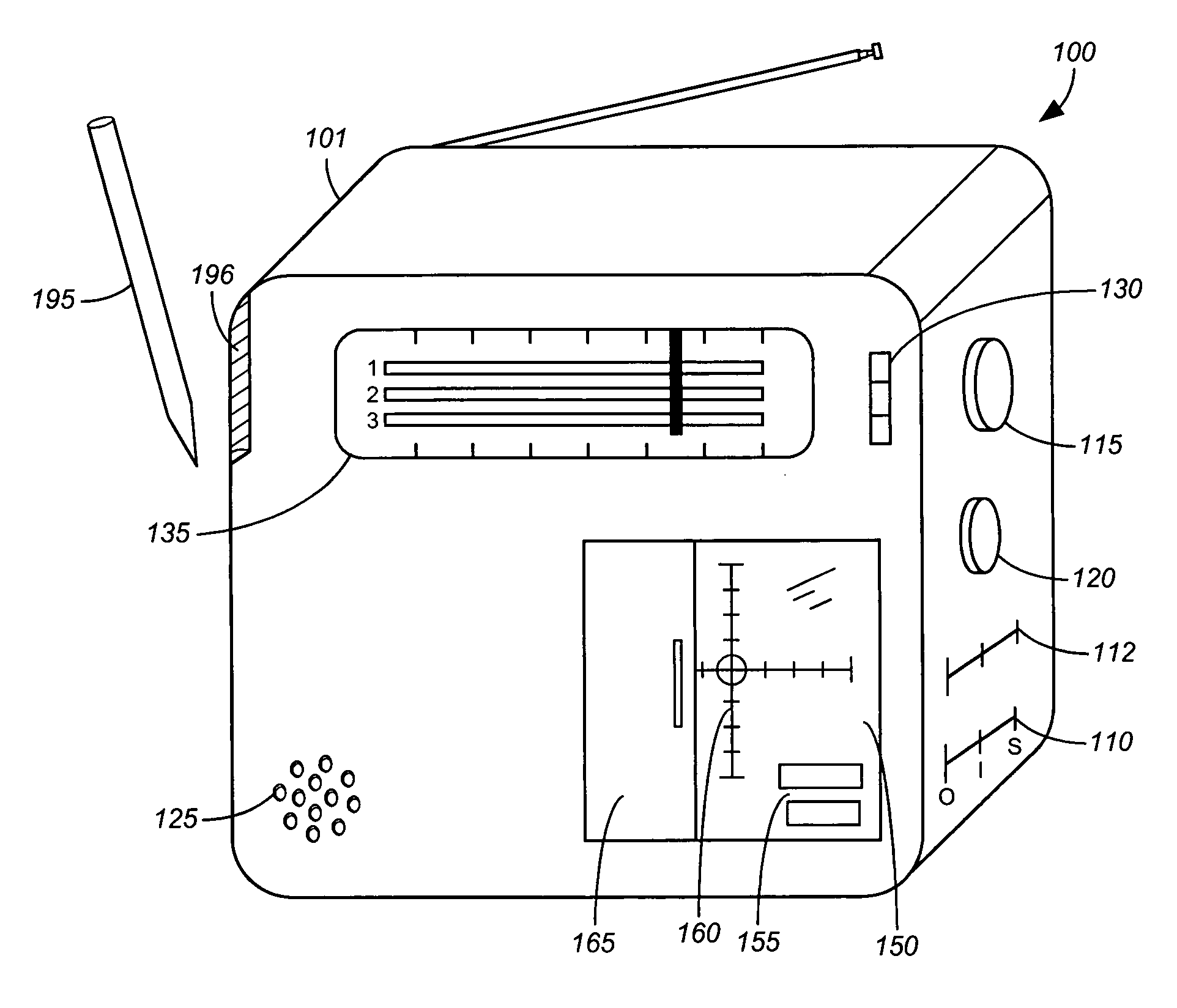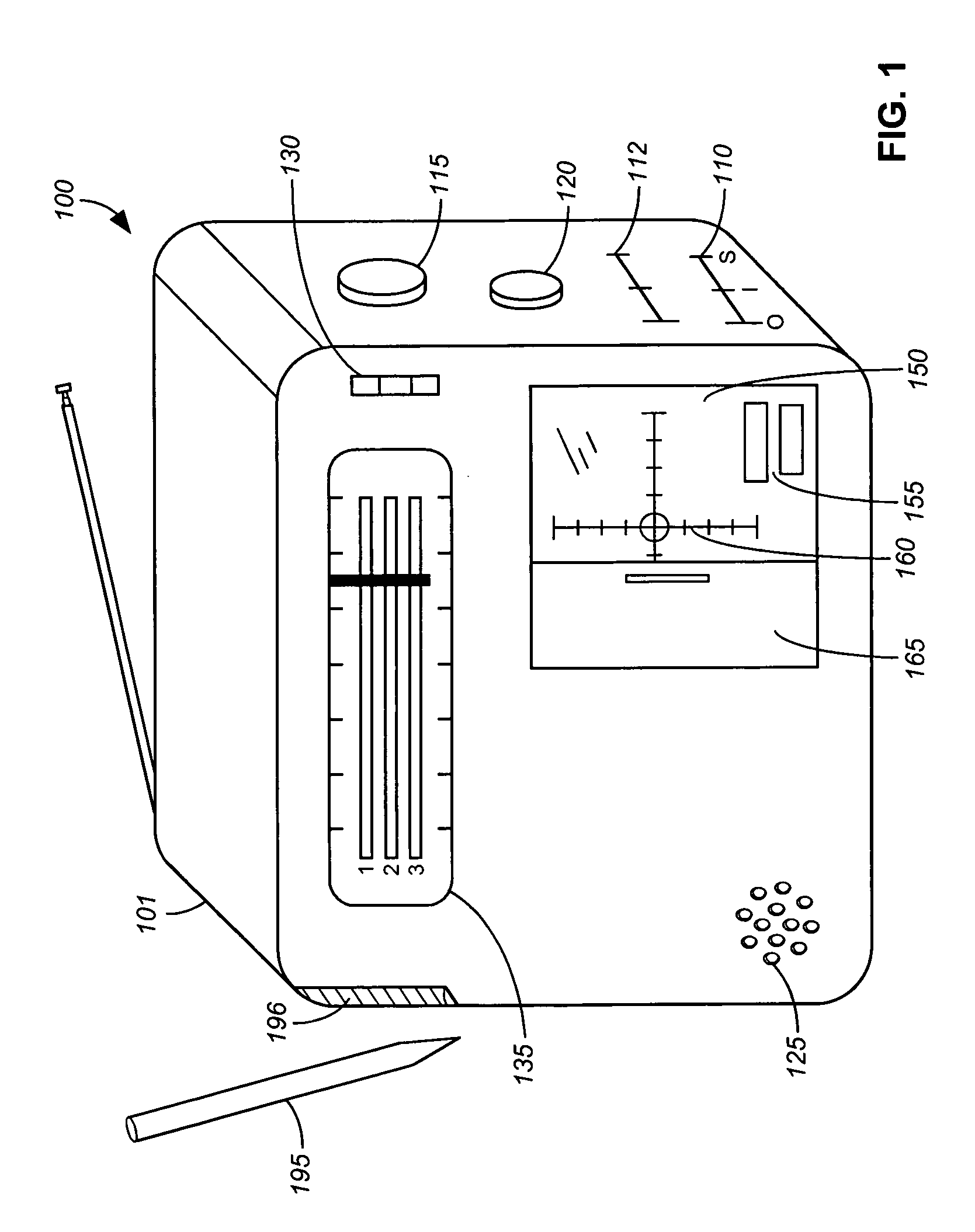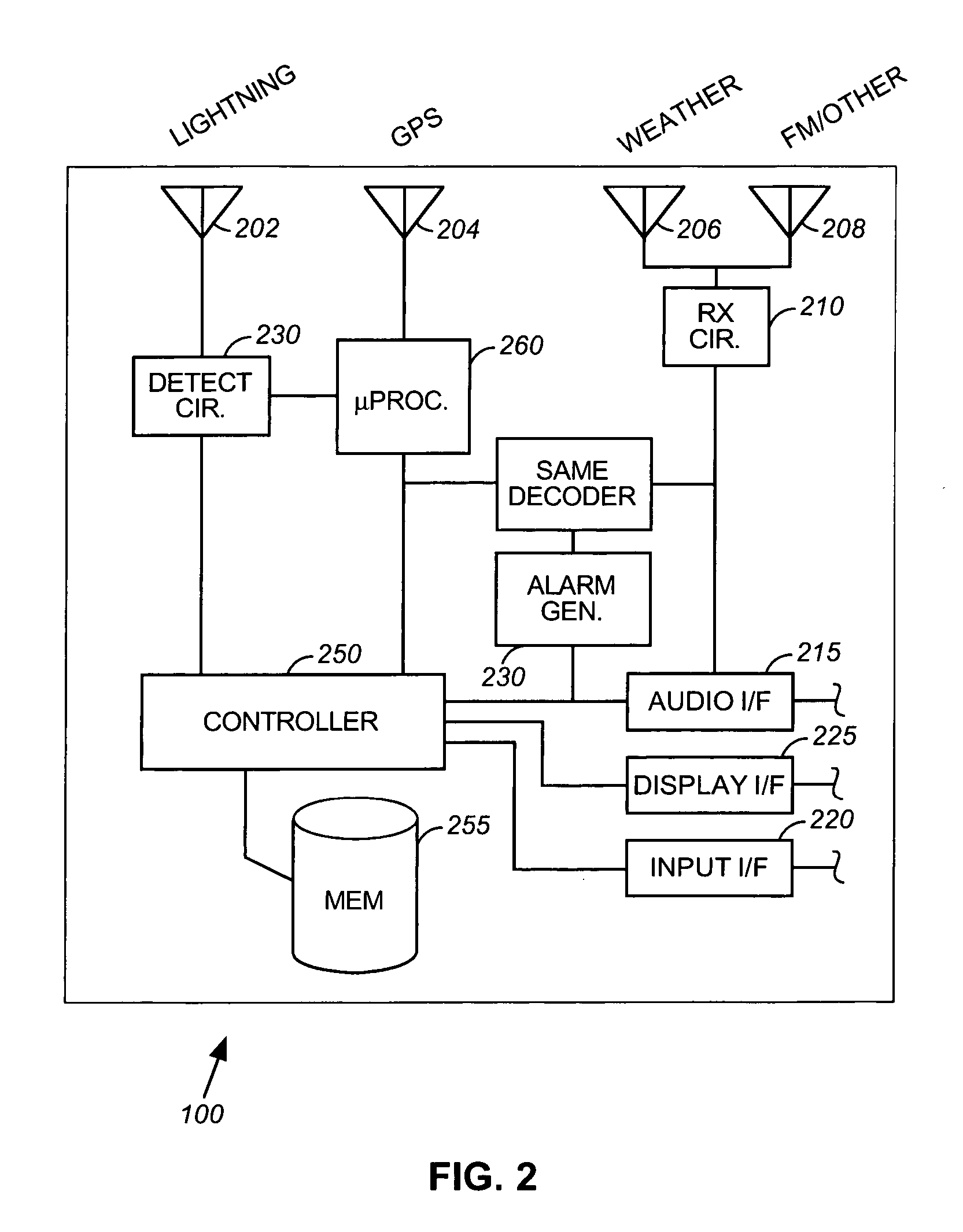Weather station
a weather station and weather technology, applied in the field of weather stations, can solve the problems of significant ability to change, difficult preparation, and people often spend a great deal of tim
- Summary
- Abstract
- Description
- Claims
- Application Information
AI Technical Summary
Benefits of technology
Problems solved by technology
Method used
Image
Examples
Embodiment Construction
[0016] The present invention is a weather station, and a method of using the weather station, for detecting certain local weather conditions and reporting their existence to the user. As well as receiving broadcast weather information relevant to the user and the user's position and providing that to the user as well. In a preferred embodiment, the information gathered from these resources is combined to form a complete and accurate picture of the local weather conditions.
[0017]FIG. 1 is an illustration of the exterior of an exemplary weather station configured according to an embodiment of the present invention. Weather radio 100 includes at least one antenna 105 for receiving radio signals. Note, however, that more than one antenna (not shown in FIG. 1) may, and probably will be present because of the number of different types of radio receptions radio 100 is expected to use. The antenna 105 of FIG. 1 is a standard broadcast radio antenna and its ability to intercept certain broa...
PUM
 Login to View More
Login to View More Abstract
Description
Claims
Application Information
 Login to View More
Login to View More - R&D
- Intellectual Property
- Life Sciences
- Materials
- Tech Scout
- Unparalleled Data Quality
- Higher Quality Content
- 60% Fewer Hallucinations
Browse by: Latest US Patents, China's latest patents, Technical Efficacy Thesaurus, Application Domain, Technology Topic, Popular Technical Reports.
© 2025 PatSnap. All rights reserved.Legal|Privacy policy|Modern Slavery Act Transparency Statement|Sitemap|About US| Contact US: help@patsnap.com



